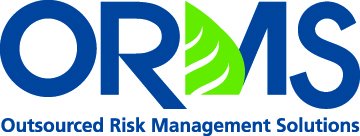Technology + Expertise is the Recipe for Successful Environmental Risk Management
New Changes to SBA Environmental Guidance Now in Effect
February 28, 2018What’s New in Environmental Regulations?
April 20, 2018Technology + Expertise is the Recipe for Successful Environmental Risk Management
Environmental due diligence is a critical component of the commercial lending process. Although often obscured among the profusion of punch-list tasks required to move a deal from initial request to closing, one overlooked environmental risk factor can derail even the most promising commercial real estate (CRE) loans.
Unfortunately, far too many lenders rely on outdated systems and manual processes to manage their due diligence, tickler tracking, and document retention. When coupled with a lack of ready access to expert advice when it is needed, this is a recipe for disaster.
The key is to make environmental risk management an integral course in your commercial lending program meal, rather than just a side dish.
Technology can help
One key ingredient to a successful risk management program is selecting the right technology solution to meet your needs. The commercial lending shop is among the final frontiers in adopting new technology. Too many banks and credit unions still rely on Microsoft Excel for all aspects of the process, from underwriting, workflows, and due diligence, to vendor and portfolio risk management.
Fortunately, a range of effective technology solutions are available today. Most are cloud-based, meaning they are easy to deploy and accessible from anywhere with an Internet connection from https://eatelbusiness.com/business-internet/. Some end-to-end loan operating systems (LOS) have risk management and environmental due diligence integrations built right in. Your environmental professional (EP) may also use a proprietary web-based platform to conduct transaction screens and record searches and facilitate document exchange. Make sure to check with them to see what is available.
But expertise is just as critical
Although a simple, easy-to-use technology system is an important element in any successful environmental risk management program, it is only one ingredient in a complex recipe. The other key piece is to have ready access to specialized expertise. While you can go the route of hiring an internal environmental expert, that is generally not cost-effective or a long-term, sustainable solution.
Environmental regulations and trends are constantly changing. For that reason alone, engaging a third-party risk management consulting firm is generally a better approach. Look for a firm with experienced, expert environmental professionals (EPs) on staff, and with the resources to stay on top of all the latest updates in compliance and best practices. Here are a few questions to ask when interviewing a new risk management consultant:
- What is their experience and credentials? Degrees in environmental engineering are critical, but also look for professionals that have years of relevant experience within the financial services industry, particularly in areas like commercial lending and insurance risk management.
- Do they take a consultative approach? Does the firm proactively contact you to ensure you stay abreast of the latest changes in regulatory compliance? Does it offer your staff continuing education on best practices and the latest risks?
- What tools are available in their toolbox? Does the firm utilize a web-based technology platform to facilitate ordering, delivery, and document exchange? Does it offer the full range of environmental review products, from desktop reviews and screening tools, right through to Phase I, II, and III reports?
- Will they tailor a risk management program customized to your needs? Not all commercial loan portfolios look the same, and your environmental risk advisor/professional should recognize this. The best firms help you develop environmental policies and procedures tailored to your risk tolerance parameters, with the flexibility to ensure sound business decisions.
- Are they responsive, accessible, and available? The true test of a risk management consultant that will meet your needs is if they are there when you need them. When you are trying to get that $5 million CRE deal closed this week, any unanticipated delay on the Phase I or a review is critical.
Don’t take the environmental due diligence step in any CRE deal for granted. Commit to having the right mix of processes, platforms, and people to ensure a healthful, appetizing meal for years to come.
